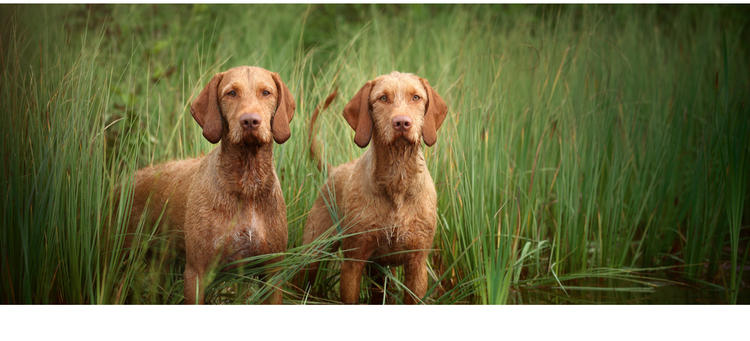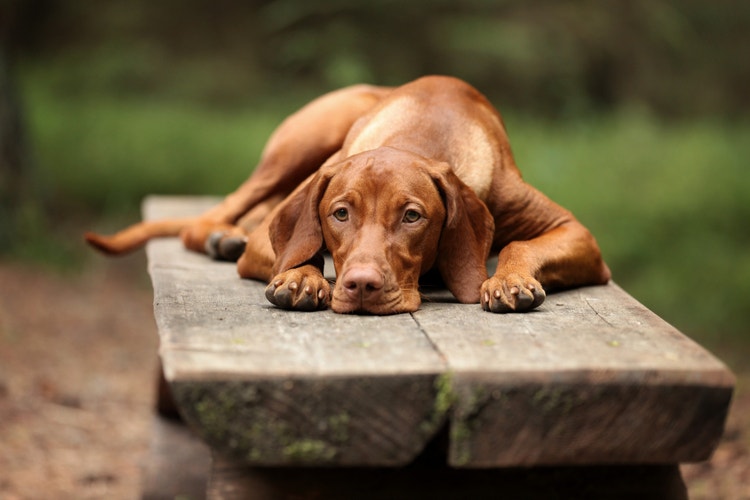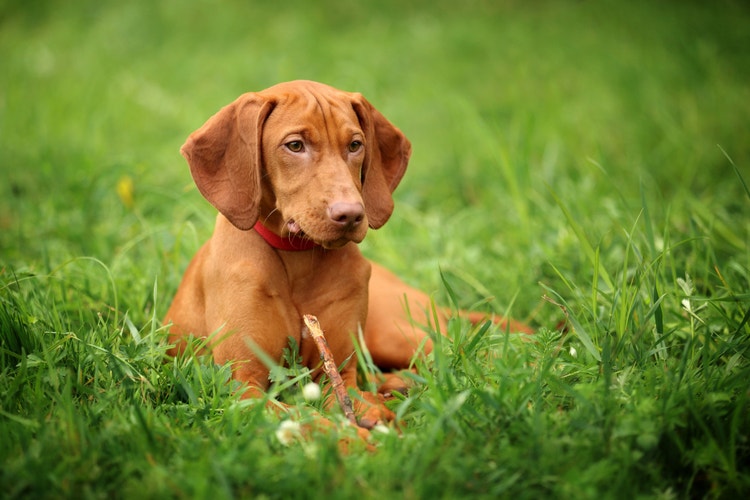

Vizsla


Where Are Vizslas From?
The origin of the Vizsla is not well known, however, there are ancient etchings in stone found in Central Europe that resemble the breed. 14th-century Hungarian literature also featurings drawings that bear a resemblance to this hunting dog.
These energetic animals were originally known for their pointing and retrieving abilities on land and in water, but have primarily taken on the role of companion in contemporary times. The Vizsla was imported into the United States in 1950 and was recognized in the American Kennel Club in 1960.
Caring for a Vizsla
What Kind of Diet Does a Vizsla Need?
What Kind of Diet Does a Vizsla Need?
Since the Vizsla was bred for hunting, they have a well-muscled physique and require a balanced and nutritious diet. They should be fed puppy food for the first year of their lives to ensure that they get the nutrients needed for bone and muscle development.
The breed is prone to skin allergies, so it’s best to consult their veterinarian if hair loss or excessive itching is noted.
How Much Grooming Does a Vizsla Need?
How Much Grooming Does a Vizsla Need?
Monthly bathing and weekly brushing is all that’s needed to keep a Vizsla happy and healthy, since they have a short, smooth coat that only sheds in the spring and summer months.
Are Vizslas Healthy Dogs?
Are Vizslas Healthy Dogs?
Despite their general health, Vizslas do suffer from a few common conditions and diseases.
Gastric dilation volvulus, also known as bloat, is a life-threatening condition where the stomach twists inside the abdomen cavity and fills with air. If you ever observe abdominal swelling and/or your Vizsla appears to be choking or retching, immediately contact your veterinarian. Vizslas should also be screened as puppies for orthopedic diseases.
The breed has an average lifespan of 12 to 15 years.
Vizslas are predisposed to: gastric dilatation volvulus, hip dysplasia, skin allergies, epilepsy, hemophilia, and von Willebrand’s disease.
How Much Training Does a Vizsla Need?
How Much Training Does a Vizsla Need?
The Vizsla breed is extremely intelligent and thrives on pleasing their owners. This makes training enjoyable for them, and they commonly excel in field and agility exercises.
Positive reinforcement training and early socializing are also ideal for this breed, since they tend to be rather shy.
How Much Exercise Does a Vizsla Need?
How Much Exercise Does a Vizsla Need?
This high-energy, sporting dog requires frequent exercise. They have a tendency to become destructive when bored, and are not ideal for apartment living or lazy days on the couch. They need a family that is “on the go” and always ready for a walk, jog, or game of fetch. However, after their energy has been drained, Vizslas love to cuddle up and snuggle with their people.
What Are the Physical Characteristics of a Vizsla?
Vizsla Facts
Other Breeds to Explore
References
- Morris, Desmond. Dogs: The Ultimate Dictionary of Over 1,000 Dog Breeds. Trafalgar Square, 2002.
- American Kennel Club. The Complete Dog Book. Random House Digital, Inc., 2006.
- Wilcox, Bonnie and Chris Walkowicz. The Atlas of Dog Breeds of the World. T.F.H Publications, Inc., 1995.


